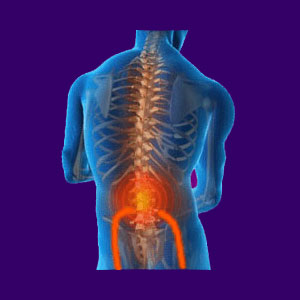
Relief from sciatica is notoriously difficult to attain, since neurological lower back, buttock and leg pain is well known to be a chronic and often lifelong syndrome. Although sciatica is most commonly theorized to exist due to some lumbar or lumbosacral spinal abnormality, such as a prolapsed disc or arthritic process, most patients do not find relief despite a plethora of treatments that are aimed at resolving the suspected causative condition. In fact, sciatica has some of the worst therapy results of any dorsalgia condition.
Finding lasting relief from sciatica seems like a virtually impossible dream for many patients who are affected by this epidemic radiculopathy condition. This is why we receive so many letters each month from patients who simply cannot stand their sciatic nerve symptoms any longer, but do not know how to find a cure.
This dialog examines the reasons why sciatica is so difficult to resolve and provides guidance on finding that elusive relief we all dream about during the worst painful attacks.
Relief from Sciatica via Accurate Diagnosis
Sciatica is never disorder unto itself, but instead, is a symptom of some underlying causation. You can not be diagnosed with sciatica. You can only be diagnosed with many conditions that might cause sciatica. In order to really have any chance at resolving sciatica pain, it is absolutely crucial to achieve a correct and accurate diagnosis. Although many patients take this facet of care for granted, diagnosis is the trickiest stage of the entire treatment process.
Achieving a diagnostic verdict is rarely difficult, since sciatica symptoms are most often blamed on the most common of all spinal irregularities. These structural conditions usually exist at L4, L5 and S1 or in the intervertebral levels in between these locations. However, just because a diagnosis is rendered does not mean that it is correct.
Statistics also demonstrate that sciatica is one of the most misdiagnosed of any symptom set. In fact, sciatic nerve symptoms are often blamed on structural abnormalities that can not possibly generate pain in the areas in which it is experienced. The affected nerves simply do not serve the bodily locations that are affected.
Additionally, blaming the usual tired spinal scapegoats helps to explain why so many patients never find lasting relief. Although bulging discs and bone spurs can enact sciatica in some cases, research studies clearly show that most mild to moderate structural abnormalities are purely coincidental to the pain. This is a fact that is rarely explained by the treating physician. In most cases, a herniated disc is imaged and is automatically implicated as the causation, often without proof or logic. Of course, sometimes the diagnosis is spot-on. However, even when the correct source process is identified, finding lasting relief from sciatica is still no easy objective.
Sciatica Relief Concerns
Treatment that is directed at a mistakenly diagnosed condition has no chance of providing any real relief. We see the evidence of medical error daily in your letters and emails. You typically describe having run the gauntlet of sciatica care practices and are just about out of hope.
Most of you who write to us are at the ends of your proverbial ropes and we completely understand your feelings. There is nothing more frustrating than spending so much time, effort and money on sciatica care, only to be disappointed time after time with the shameful results of treatment.
Believe it or not, it is rarely the treatments themselves which fail; it is the diagnosis. If the diagnosis were correct, the subsequent treatments would be indicated and appropriate. Additionally, these therapies would stand a very good chance of resolving the pain. However, as previously mentioned, most diagnoses of sciatica are flawed. This is not editorial opinion, but instead is a fact supported by widespread clinical research and professional practice statistics.
Therefore, in order to better your chances at beating sciatica, you must concentrate your attention on attaining a true and accurate diagnosis. Never assume that any label applied to your anatomy is the correct explanation for your pain. Instead, demand logical proof of the causative process being guilty and get several opinions, from a variety of different types of physicians, that concur. Sure, this process seems like a bit of extra work, but it is much better than treating the condition unsuccessfully for years and undergoing unnecessary surgical butchery.
Treatment That Does Not Provide Relief from Sciatica
Given the fact that the diagnosis is actually 100% correct, there are still many problematic concerns with the typical sciatica therapy agenda:
The majority of sciatica treatments are not even designed to cure to the conditions that are currently suspected of causing the pain. Most treatments are symptomatic in nature, which means they may make the pain more bearable, but will never resolve the underlying reason for the pain to exist. No wonder sciatica is often treated, but seldom cured.
Symptomatic care is extremely profitable, since customers will return time and time again in order to relieve their pain. Provide a cure and your customer might be gone forever. This fact certainly does not give medical practitioners much incentive to pursue curative methods of treatment.
The few methods of care that might actually resolve a serious structural diagnosis are often held in reserve or not mentioned at all. These modalities include risky surgical endeavors and noninvasive spinal decompression. Many patients suffer for decades before these possible solutions are even offered. Worse still, when surgery is performed, it is often targeting the wrong source process or does more damage than good for the patient. Remember, surgery is a terrible ordeal to endure and can leave lifelong consequences in its wake, such as neurological injury, spinal instability, scar tissue and utter disability.
An objective analysis of sciatica surgery techniques shows the majority to be unenlightened and not indicated, based on symptomatic expression. Worse still, statistics show that most patients will not cite benefits from surgery over timelines of over 7 years postoperatively. However, for patients who enjoy any semblance of relief, this is actually the good news, since many patients are statistically worsened immediately after surgery and a great number never fully recover from sciatica.
Sciatica Relief Practices
No pain syndrome will resolve if the treatments utilized are not even targeting the actual source of misery. This is why so many sciatica therapies fail. They are not being aimed at the right causative issue. Most curative methods of care are seeking to alleviate pain due to nerve compression issues, when all along the nerves might be involved, but are not being physically impinged upon. Any diagnostician who studies pinched nerves would realize that the continued presence of pain virtually rules out actual structural compression issues.
After all, research clearly shows that a true pinched nerve will stop signaling altogether, resulting in true objective absence of neurological signal; not chronic pain. However, this is surely another of the many sciatica facts that might have conveniently been left out of your last medical evaluation.
Relief from Sciatica Considerations
If you have been suffering for months, years or even decades with stubborn unresolved sciatica, there is a very good chance that your doctors have sent you on a hopeless mission. You have probably been exhausting yourself seeking care for some spinal condition which is merely coincidental to your pain and not responsible for causing it. This is a travesty of medicine, but is a daily occurrence in the back pain industry.
In order to find true relief from sciatica, you need to get more involved in your own care. You must stop relying on antiquated and incorrect theories, which are driven by the potential for financial gain, to guide your major life decisions. Learn about your diagnosis and understand why there is a very good chance that the theories applied to your pain may be completely baseless.
Maybe you do have a physical reason for your pain. If so, and it has been correctly identified, treatment should work. If you can not find relief, despite active treatment from several care providers in many different healing arts, then you know that something must be amiss. That factor is likely to be the diagnostic accuracy.
We wish we could provide universally-applicable advice on finding actual sciatica relief, but unfortunately it is a case-by-case basis. Any doctor, company or product that claims otherwise is obviously marketing something to you and cares nothing for your personal struggle with chronic suffering.






